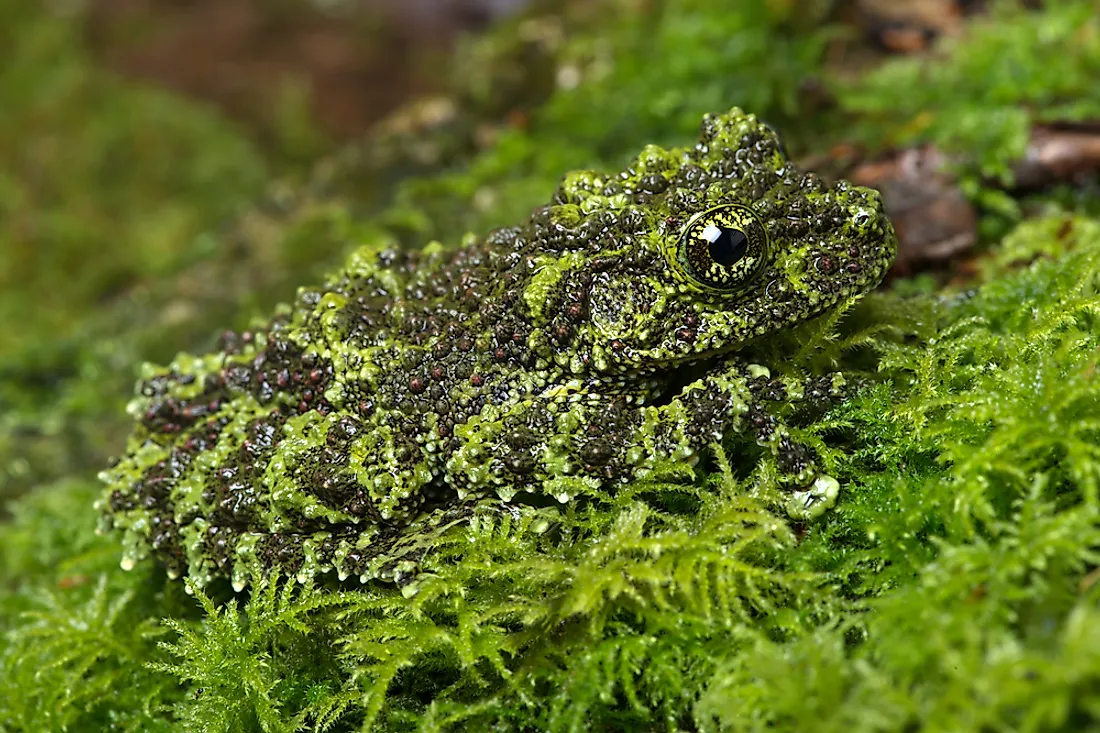What Is The Difference Between Mimicry And Camouflage?

Mimicry and camouflage are both adaptations that animal and plant species exhibit for the purposes of protection from predators, prey, or to blend in with their environment. Both mimicry and camouflage involve morphological changes.
Definition and Examples of Mimicry
Mimicry refers to an animal or plant evolving to take on the appearance of another species, and is a process common among insects and snakes. There are several types of mimicry including Batesian mimicry, Müllerian mimicry, Mertensian mimicry, and Vavilorian mimicry. Batesian mimicry is an adaptation that makes it possible for a harmless species to look similar to an unpalatable and harmful species as a means of protection from predators. Müllerian mimicry refers to the ability of two harmful species to resemble each other for purposes of shared protection. Mertensian mimicry refers to the ability of a harmful species to adapt characteristics of a less harmful species to deceive its prey. Vavilorian mimicry is a type of plant adaptation whereby weeds take on the same appearance as a domesticated plant species.
An example of mimicry is the non-poisonous scarlet kingsnake, which has taken on a similar color and pattern of the skin of the venomous coral snake to deceive its predators that it is equally dangerous. Similarly, the non-toxic viceroy butterfly mimics the toxic monarch butterfly to prevent birds from feeding on it, as the birds assume the viceroy is equally toxic.
Definition and Examples of Camouflage
Camouflage, also known as crypsis, refers to the ability of an animal to blend into its environment through changing its color or naturally possessing colors or spots that blend in with their environment. In some instances, an animal completely changes its appearance to remain unnoticed. Therefore, camouflaging often involves stripes, spots, as well as coloration patterns.
Three types of camouflage exist, namely concealing coloration, disruptive coloration, and disguise coloration. Concealing coloration can occur when a species naturally possesses fixed colors that blend in with its environment. For example, the stonefish and flatfish both have coloration that resembles the seabed. Disruptive coloration refers to the stripes and spots that animals have which help them hide from predators or prey, as they cannot be easily seen. Examples include the spots of a leopard or a jaguar’s stripes. Disguise coloration refers to the ability of a species to appear as something completely different in the environment. An example is when an insect hides underneath a leaf such that it looks like the leaf. Other examples of camouflagers include chameleons, stick insects, arctic hares, red squirrel, iguana, sea urchins, and masked hunter bugs.
Differences Between Mimicry and Camouflage
The first difference is that mimicry involves morphological, behavioral, and physiological adaptations, whereas camouflage only involves morphological characteristics. Second, in most cases, camouflage relates to the blending of the animal or plant with its environment. However, mimicry involves a species taking on the resemblance of another species, and does not usually involve blending in with the environment. Third, the types of mimicry, which are Batesian, Müllerian, Mertensian, and Vavilorian, are unrelated to the different forms of camouflaging, which are concealing coloration, disruptive coloration, and disguise coloration.











